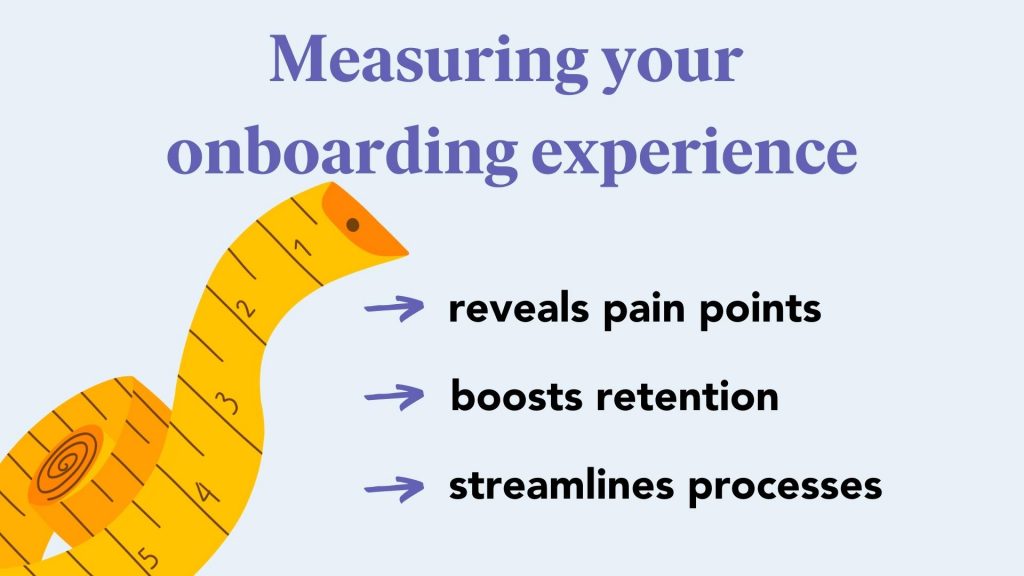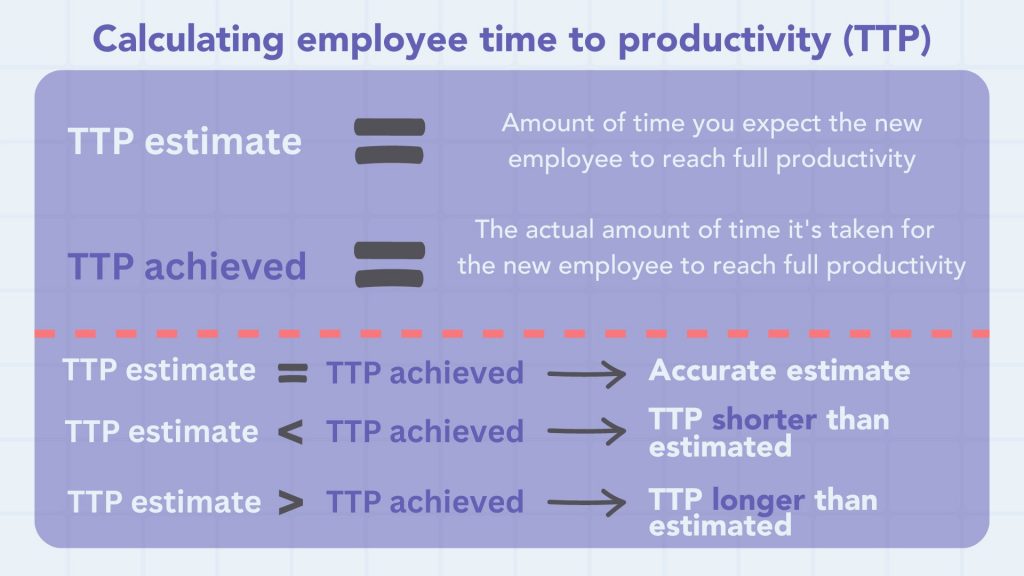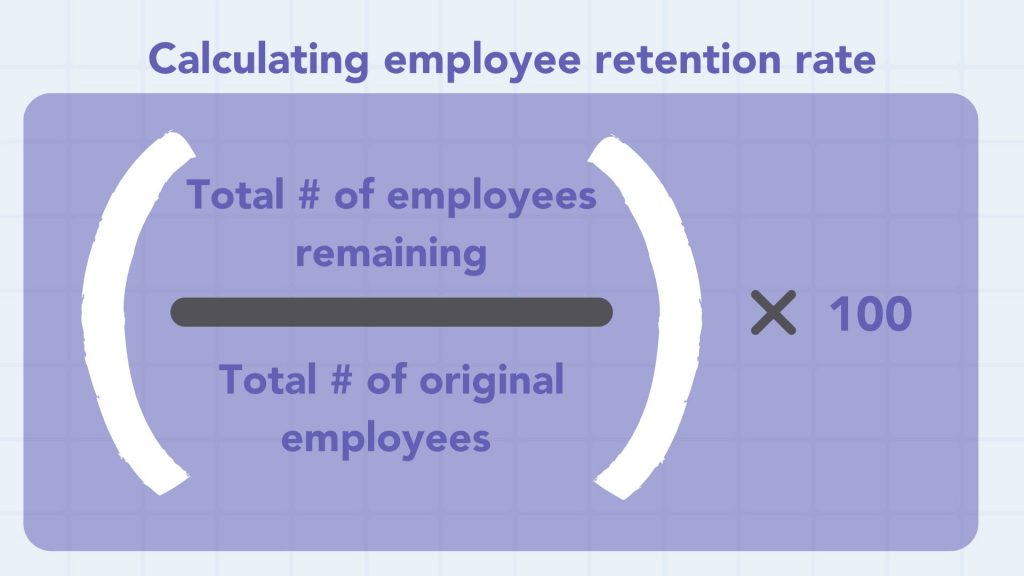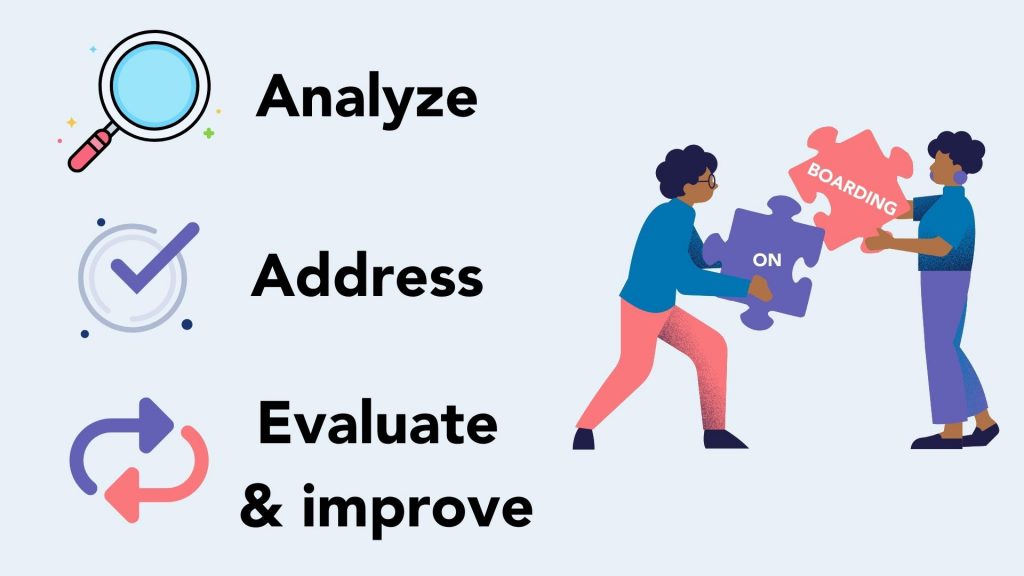Understanding how to measure employee onboarding experience—the process in which new hires are integrated into an organization—is one of the key pillars in building engaged and productive teams. Onboarding is often one of the first opportunities an employee gets to interact with and learn about your company and sets the tone for their experience as an employee.
Companies that seek to build and maintain a strong company culture must regularly audit and fine-tune their onboarding process. The question of how to measure onboarding employee experiences is top of mind for HR managers looking to understand precisely where to make improvements to their onboarding practices. Knowing what to measure can give you key insights into your employee’s experiences, and help identify pain points before they become a roadblock for your team.
Key Elements of Successful Onboarding
The onboarding process consists of many steps, from welcome lunches to benefits enrollment, each organization has their process for getting their new hires integrated into their organization. Regardless of your process, every successful onboarding program possesses key elements that ensure employees are informed, engaged, and supported in their first weeks on the job. If you’re looking to understand how to measure your onboarding employee experience, the first step is to guarantee the following elements are incorporated into your onboarding process.
Pre-boarding communication
Pre-boarding is the process of orienting your new employees to your company and its culture before their start date. This early communication helps to set the tone for your new hire’s experience and ensures that they feel prepared for their first day on the job. Pre-boarding is a key component of a successful onboarding process because it:
Sets expectations — Pre-boarding allows new hires to gain an understanding of the company culture, expectations, and goals. This knowledge can help them to feel more comfortable and prepared for their first day on the job.
Reduces stress — Starting a new job can be stressful, pre-boarding can help to alleviate some of this stress by providing new hires with information about their role, team, and company.
Increases engagement — Pre-boarding activities can help to build a sense of connection and engagement with the company before the new hire even starts. This can help to increase retention rates and employee satisfaction.
Saves time — Pre-boarding helps to streamline the onboarding process by allowing new hires to complete necessary paperwork and training before their start date. This can save time and make the transition smoother for both the employee and HR.
Clear expectations and goals
To allow employees to thrive in their roles, they must understand exactly what is expected and required from them to meet the goals and mission of the company. Setting expectations early on, like during the pre-boarding phase of onboarding, creates a path for your new hire to thrive.
Goals increase engagement by helping employees see how their work contributes to the greater success of the company, as well as identifying and clearing any roadblocks that may deter them from achieving those goals. Don’t wait until performance review cycles to implement guidance such as key performance indicators for employees — the onboarding process is prime time to align employees’ goals with the company mission.
Effective training
Training helps employees become familiar with their roles and responsibilities and aligns them with the company’s processes, allowing them to perform their job effectively.
When considering how to measure your onboarding employee experience, take a look at how training is woven into the process. A well-designed training program demonstrates your company’s investment in your employee’s success, increasing retention and productivity.
Whatsmore, training is also an effective tool for captivating and holding onto top talent at your company. A recent SHRM study found more than 8 out of 10 HR managers believe training to be an effective tool in attracting and retaining talent.
Welcoming environment
Whether in-person or remote, your employee’s working environment can have a significant impact on their experience at your company. Creating a welcoming environment during the onboarding period can help ease a new employee’s anxiety and bring comfort and confidence to their new role.
Fostering a welcoming environment can be done through various actions such as mentorship programs, welcome emails or Slack announcements, or personalized touches to new employee welcome kits. Whatever your approach, welcoming environments promote higher job satisfaction and engagement and should be a central part of your onboarding process.
Ongoing support and feedback
Onboarding is not a one-time activity but a process with layers and phases. As your employee continues to grow into their role and acquaint themselves with your company, it’s important to provide ongoing support and feedback to ensure their success, and improve your retention; according to SHRM, 76% of employees say they are more inclined to stay in a company if it offers continuous learning and development.
When creating or revising your employee onboarding checklist, include 30, 60, and 90-day check-ins with your new hire. These check-ins are the perfect time to assess how employees are acclimating to their roles and help identify areas of improvement or opportunities for additional training. All of which promote a culture of open and honest feedback and ongoing support.
Consistency
One of the easiest ways to answer how to measure your onboarding employee experience is by looking for consistency. A uniform onboarding experience ensures all employees receive the same level and quality of training, information, and support, regardless of their department or role. This ensures compliance, promotes equity and fairness, fosters a positive company culture, and increases efficiency because all employees get the tools they need to thrive.
Benefits of Measuring the Onboarding Employee Experience
Measuring your onboarding employee experience can give you valuable insights into the effectiveness of your onboarding efforts, and provide you with the tools necessary to improve and enhance not only your onboarding process but your overall employee engagement.

Identifies areas for improvement
Gathering feedback from new employees and analyzing data helps you pinpoint the particular aspects of your onboarding program that need updating or improvements. Once you’re aware of the pain points in your onboarding practices, you can take the necessary steps to improve and enhance the new hire experience, thus increasing engagement.
Increases employee retention
Onboarding is a crucial factor in employee retention, with studies showing 69% of employees are more likely to stay at their company if they receive a quality onboarding experience. When new employees feel supported and valued during their onboarding process, it sets them up for long-term success in their roles. Measuring your onboarding process and identifying areas of improvement help pave the way for higher retention and more engaged teams.
Saves time and resources
Onboarding is a multi-step process that takes a considerable amount of HR’s time to execute. By measuring your onboarding process, you can identify areas for improvement not just in employee experience, but also in areas where you can streamline and automate the process. Streamlining and automating your HR process can significantly reduce the amount of time and resources needed to onboard new employees, promote consistency, and free up HR and management’s valuable time to focus on strategic matters.
How to Measure Your Onboarding Employee Experience — 5 Key Metrics
Now that we’ve examined what makes a successful onboarding program and the benefits of measuring your employee’s experience, let’s dive into exactly how to measure the onboarding employee experience.
1. Employee surveys
Employee surveys are a great way to get first-hand feedback from new hires on how their onboarding experience went, an onboarding survey sent within the first few weeks after an employee has been onboarded is best for capturing feedback while it’s still fresh in the employee’s mind.
When crafting your employee survey, be sure to first define what specific aspects of your onboarding program you’d like to improve such as quality of training, clarity of information provided, or overall satisfaction with the process.
Compile a list of clear, concise, and easy-to-understand questions that are specific to your survey goal. Be sure to include both closed and open-ended questions to gather qualitative and quantitative feedback. And analyze the results by looking for patterns or trends to identify areas of improvement. Use this feedback to make changes to your onboarding processes and improve the experience for your employees.
2. Time to productivity
Time to productivity (TTP) measures how long it takes a new employee to become fully integrated with their team and functional in their job. TTP will look different for each role so it’s important to determine what the benchmarks are for each employee to accurately measure their TTP. A successful onboarding process will have employees trained and up to speed so they can contribute to company goals promptly. If your new hires are generally producing a low TTP, it’s a good indicator that your onboarding process needs some work.
Employee productivity is defined differently by every organization, so calculating TTP can be tricky. A simple approach to start measuring TTP can focus on managers’ estimates of the time that new employees need to become fully productive and their actual results. The formula to look like this:

3. Retention rates
Employee retention is a useful metric in determining the strength of your onboarding process. If you experience an unexpected rise in employees leaving your company, it’s a strong indicator that your onboarding process is lacking. Quality onboarding, where employees are well trained, welcomed, and provided the tools and support they need to perform, is a huge driver in retention.

4. Performance metrics
Performance metrics provide objective data to help you determine the success of your onboarding process. This data will allow HR managers the insight needed to determine strengths and weaknesses and assess whether an employee’s output is aligning with business goals.
Similar to measuring TTP, low-performance metrics early on in a new hire’s time can be a sign of poor training or lack of support, and indicate the need for improvement in your onboarding processes.
5. Manager feedback
Managers have a unique perspective that can be extremely valuable to HR teams aiming to determine how to measure the onboarding employee experience. Because managers are closely tied to the output and objectives of a new hire’s roles and responsibilities, they can often provide insight into the gaps new hires may be experiencing.
Connect with managers in the initial months of a new hire joining your company to get a feel for how prepared and supported new employees are, and use their feedback to determine what about your onboarding process is working, and what needs improvement.
Implementing Changes Based on Measured Results
After you’ve determined how to measure the onboarding employee experience, it’s essential to apply what you’ve learned by creating actionable strategies to improve your onboarding program. This can be done in 3 phases.

Analyze
In following how to measure the onboarding employee experience, you’ll find yourself with a good amount of data to sift through. The key to analyzing these metrics is to look for trends in employee behavior. If over 6 months you only have 1 new hire who is struggling to perform while the rest are thriving, and you’re offering consistent and uniform onboarding to each employee, it’s probably safe to say it’s not an issue with your training. However, if you notice trends positive or negative, this can be a good indicator of a pain point or success in your onboarding.
Address
Once you’ve analyzed your data and determined strengths and weaknesses in your onboarding, it’s time to address the pain points and take action. Usually, this takes the form of revisions or expansion of certain aspects of your onboarding program, maybe your employees aren’t engaged or onboard with your company culture so you develop a mentorship program to get them better acquainted with their peers. Or new hires TTP is consistently low so you build a more robust training program to increase their skills and knowledge for their role. Whatever your approach, it’s essential to address these areas quickly and with precision to avoid further issues in employee performance.
Evaluate and improve, continuously
Companies and their people are ever-evolving, and as workplace trends and world events continue to change and shift the greater culture, HR teams and their onboarding practices will need to evolve with them to keep employees engaged and successful. The process of evaluating and improving your onboarding practice should be an evergreen exercise.
Leverage Automation to Transform Your Onboarding
The success of an onboarding program can have a significant impact on your employee’s experience and directly contributes to the success of your company. Learning how to measure the onboarding employee experience is crucial for companies to make improvements and ensure a positive experience for new hires.
With Omni, you can automate your entire onboarding process to create a consistent and uniform experience, ensuring every employee receives the support and training they need to thrive. Schedule a demo with our team to learn how you can set the foundation for long-term employee success and create engaged and productive teams today.


